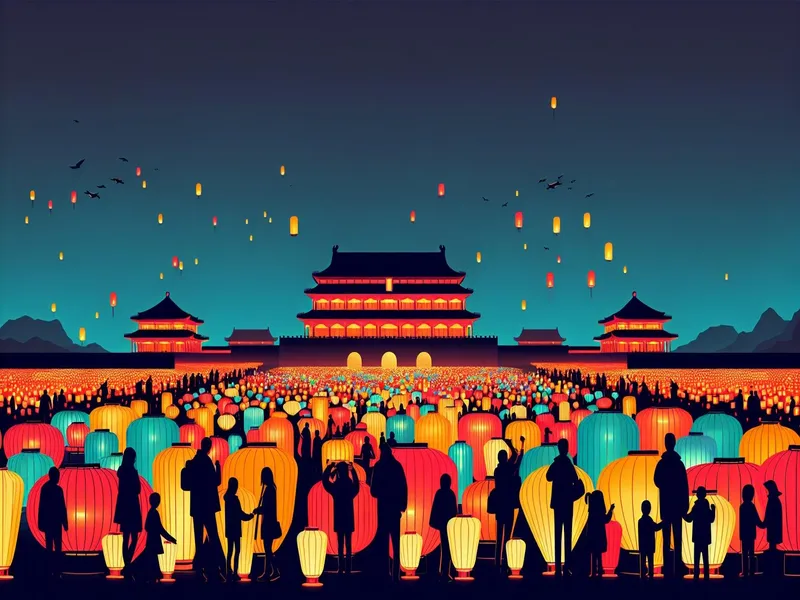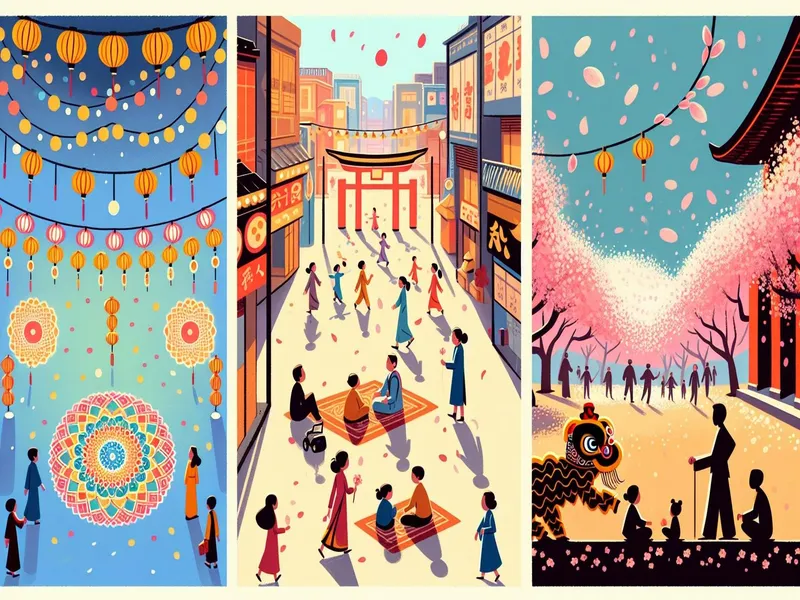
You’re probably seeking the best ways to immerse yourself in local traditions, whether it’s through festivals, cuisine, or historical landmarks. This guide will help you navigate the rich cultural world of Asia and make the most of your journey.
Ignoring the cultural aspects of travel means missing out on deep connections and authentic experiences. You might find yourself feeling like just another tourist rather than truly engaging with the places you visit. It’s essential to investigate into cultural travel to enrich your adventures and create lasting memories.
I’ve spent years traveling across Asia, uncovering hidden gems and unique traditions that many tourists overlook. My insights come from firsthand experiences and extensive research, ensuring you get reliable advice tailored to your needs.
Whether you’re a solo adventurer, a family looking for educational trips, or a couple searching for romantic escapes steeped in culture, this article has something for everyone. Tailored recommendations will help you plan an unforgettable cultural journey.
I understand how overwhelming it can be to plan such a trip. Trust me; I’ve been there too. But with my guidance, you’ll feel confident exploring Asia’s vibrant cultures and making every moment count. For more travel tips and activities that can enhance your trip, check out our comprehensive guides here.
The Charm Of Cultural Travel In Asia
Cultural travel in Asia is like opening a treasure chest filled with centuries-old traditions and vibrant modern influences. You feel the pulse of history in every street, market, and temple. It’s fascinating how each country offers its unique charm.
Immersing In Local Festivals
One thing that always stands out to me is local festivals. Imagine celebrating Holi in India, where you throw colorful powder at strangers who become friends within minutes. Or joining the Lantern Festival in Thailand and watching thousands of lanterns light up the sky like stars who’ve come down for a closer look. These experiences aren’t just fun; they give you a deep understanding of local customs and values.
Key festivals to consider:
- Holi (India): A festival of colors celebrated in March
- Lantern Festival (Thailand): Usually held in November
- Cherry Blossom Festival (Japan): Celebrated during spring
Savoring Authentic Cuisine
Let’s talk about food because, honestly, who doesn’t love trying new dishes? Asian cuisine is incredibly diverse. When I was in Vietnam, I tasted phở from a street vendor—it felt like tasting the soul of Hanoi itself! Similarly, savoring sushi made by master chefs in Tokyo or indulging in dim sum in Hong Kong can take your taste buds on an unforgettable journey.
Must-try dishes:
- Phở (Vietnam)
- Sushi (Japan)
- Dim Sum (Hong Kong)
Exploring Historical Landmarks
Then there are the historical landmarks that transport you back in time. Walking through Cambodia’s Angkor Wat feels like stepping into an ancient civilization where gods walked among men. Visiting China’s Great Wall gives you not just a view but also a sense of awe—at how such monumental feats were possible centuries ago.
Notable landmarks:
- Angkor Wat (Cambodia)
- Great Wall (China)
- Taj Mahal (India)
Real-Life Anecdotes And Tips
I remember once getting lost while exploring Kyoto’s temples—ended up discovering a hidden tea house where I had my first authentic matcha experience! Sometimes getting off the beaten path leads to unexpected joys.
Here are some tips based on my travels:
- Be open-minded—every culture has its quirks.
- Learn basic phrases—it shows respect and opens doors.
- Always carry cash—many small vendors don’t accept cards.
- Respect local customs—even if they’re different from what you’re used to.
Top Cultural Destinations

Exploring Asia’s cultural hotspots offers experiences you won’t forget. Here’s a peek at some must-visit places that blend history, tradition, and modernity in unique ways.
Japan: Tradition Meets Modernity
Japan strikes a perfect balance between the old and new. Picture this: You’re wandering through Tokyo’s bustling Shibuya Crossing, then stepping into the tranquil Meiji Shrine just minutes away. I remember my visit to Kyoto, where ancient temples like Kinkaku-ji stand proudly amidst the cityscape. Don’t miss experiencing a traditional tea ceremony or staying in a ryokan (a Japanese inn). It’s like time travel without leaving your seat.
India: A World Of Heritage
India’s cultural diversity is mind-blowing. Imagine walking through Jaipur’s Pink City with its stunning palaces and forts. When I visited Varanasi, one of the world’s oldest living cities, I was captivated by the Ganga Aarti—a spiritual ritual by the Ganges River. From savoring spicy street food in Mumbai to exploring ancient temples in Tamil Nadu, India’s rich world of heritage leaves you spellbound at every turn.
Vietnam: The Land Of Timeless Culture
Vietnam feels like stepping into a beautifully preserved historical novel. Hanoi’s Old Quarter teems with life; its narrow streets are filled with vendors selling phở (noodle soup) and bánh mì (Vietnamese sandwich). My trip to Hoi An was unforgettable—this ancient town glows with lanterns come nightfall, creating an almost magical atmosphere. Don’t skip Halong Bay either; its limestone karsts rising from emerald waters are simply breathtaking.
These destinations offer glimpses into cultures shaped over centuries, each providing unique experiences that resonate deeply with travelers seeking authentic connections.
Must-Experience Cultural Festivals

Experiencing cultural festivals in Asia is like diving into a living museum. Each festival tells a story, allowing you to connect deeply with the local culture and traditions.
Diwali In India
Diwali, often called the Festival of Lights, is one of India’s most significant celebrations. Picture this: streets adorned with colorful lights, homes decorated with intricate rangoli (art made from colored powders), and the air filled with laughter and fireworks. I remember walking through Jaipur during Diwali; it felt like stepping into a fairy tale. You’ll see people dressed in their finest clothes, exchanging sweets and gifts. The atmosphere buzzes with joy and togetherness.
Cherry Blossom Festival In Japan
The Cherry Blossom Festival, or Hanami, transforms Japan every spring as cherry trees burst into bloom. Imagine parks blanketed in pink petals—it’s like nature throwing its own confetti party! I once picnicked under these blossoms in Tokyo’s Ueno Park. Families gathered on blue tarps enjoying bento boxes (Japanese lunchboxes) while children played around them. It’s not just about the flowers; it’s a time for reflection and renewal, celebrated by locals and tourists alike.
Tet (Lunar New Year) In Vietnam
Tet marks the Vietnamese Lunar New Year—a celebration that’s all about family reunions and honoring ancestors. Think of it as Thanksgiving meets New Year’s Eve but stretched over several days! During my visit to Hanoi for Tet, I witnessed vibrant parades featuring lion dances (a traditional dance symbolizing power). Streets were lined with kumquat trees and peach blossoms symbolizing prosperity. Everyone wore new clothes to signify a fresh start—a tradition that resonates deeply across generations.
These festivals offer more than just visual spectacles—they provide immersive experiences that let you live the culture firsthand.
Tips For Respectful Cultural Engagement
Exploring Asia’s rich world of cultures can be a life-changing experience. But it’s essential to engage respectfully to appreciate the beauty and depth of each culture fully.
Learning Basic Local Etiquette
Understanding local etiquette isn’t just polite; it’s key to meaningful cultural interactions. In Japan, for example, bowing is a common greeting. The depth and duration of your bow can convey respect and gratitude. Knowing this helps you connect better with locals.
In Thailand, never touch someone’s head or point your feet at people or religious objects—it’s considered disrespectful. Small gestures like these make a big difference in how you’re perceived by the community.
Dressing Appropriately
Dressing appropriately shows respect for local customs and traditions. In countries like India and Malaysia, modesty is highly valued, especially when visiting temples or mosques. Wearing long sleeves and pants or skirts below the knee not only shows respect but also gives you access to places that might otherwise be restricted.
I once visited the Grand Palace in Bangkok without knowing about their strict dress code. I had to buy a sarong from a nearby stall just to get in! These experiences remind us why understanding dress codes beforehand matters.
By following these tips, you’ll not only avoid faux pas but also enrich your travel experience through deeper connections with the cultures you encounter.
Culinary Adventures
Embarking on a culinary adventure in Asia is like diving into a treasure trove of flavors. From the bustling street markets to high-end restaurants, the continent offers something for every palate.
Street Food Wonders
Street food in Asia isn’t just quick eats; it’s an experience. Imagine wandering through Bangkok’s night markets, where the air is thick with the aroma of pad thai, grilled satay, and mango sticky rice. I remember my first bite of banh mi in Ho Chi Minh City—not only was it delicious, but watching the vendor assemble it was pure art.
- Bangkok: Pad Thai (stir-fried noodles)
- Ho Chi Minh City: Banh Mi (Vietnamese sandwich)
- Kuala Lumpur: Nasi Lemak (coconut milk rice)
Traditional Dishes
Traditional dishes often tell stories about their regions. Take Japan’s sushi, for example—each piece reflects meticulous craftsmanship and centuries-old traditions. On a visit to Tokyo, I joined a sushi-making class and learned that “sushi” literally means “sour-tasting,” referring to the vinegared rice.
- Japan: Sushi
- India: Biryani (spiced rice dish)
- China: Peking Duck
Food Festivals
Food festivals are another fantastic way to immerse yourself in local culture. Picture yourself at Taiwan’s Lantern Festival not just lighting lanterns but savoring bowl after bowl of beef noodle soup as you watch intricate lantern displays float by.
- Taiwan Lantern Festival
- Beef Noodle Soup stalls
- Bubble Tea stands
- South Korea Kimchi Festival
- Kimchi-making workshops
- Fermented foods market
- Singapore Food Festival
- Hawker center tours
- Cooking demonstrations
Learning Through Cooking Classes
Cooking classes provide hands-on experiences that deepen your understanding of local cuisines. In Chiang Mai, Thailand, I enrolled in a cooking class where we started our day at a local market picking fresh ingredients before crafting dishes like green curry and papaya salad. It’s not just about making food; it’s about connecting with people who share their culinary heritage.
Fine Dining Experiences
For those who enjoy fine dining, Asia boasts some world-renowned restaurants. Dining at Gaggan in Bangkok felt like being part of an avant-garde performance art piece with molecular gastronomy techniques transforming familiar tastes into extraordinary experiences.
These culinary adventures aren’t merely meals—they’re gateways into different cultures offering rich narratives behind every dish and drink. Whether you’re munching on street food or indulging in gourmet cuisine, each bite brings you closer to understanding the diverse world that makes up Asia’s vibrant culture.
The Bottom Line
Cultural travel in Asia offers unparalleled opportunities for deep, authentic experiences. It’s about more than just seeing new places—it’s about connecting with centuries-old traditions and vibrant modern influences. By engaging with local festivals, savoring diverse cuisines, and exploring historical landmarks, you’ll create memories that last a lifetime.
My journeys across Asia have shown me the immense value of cultural immersion. Whether you’re walking through Tokyo’s bustling streets or marveling at the Taj Mahal’s grandeur, each moment enriches your understanding of this captivating continent.
So pack your bags with an open mind and a respectful heart. Your adventure awaits in Asia’s treasure trove of culture and history.